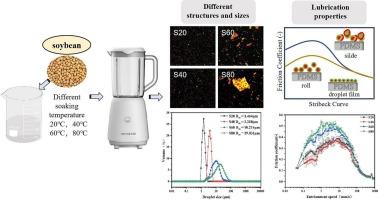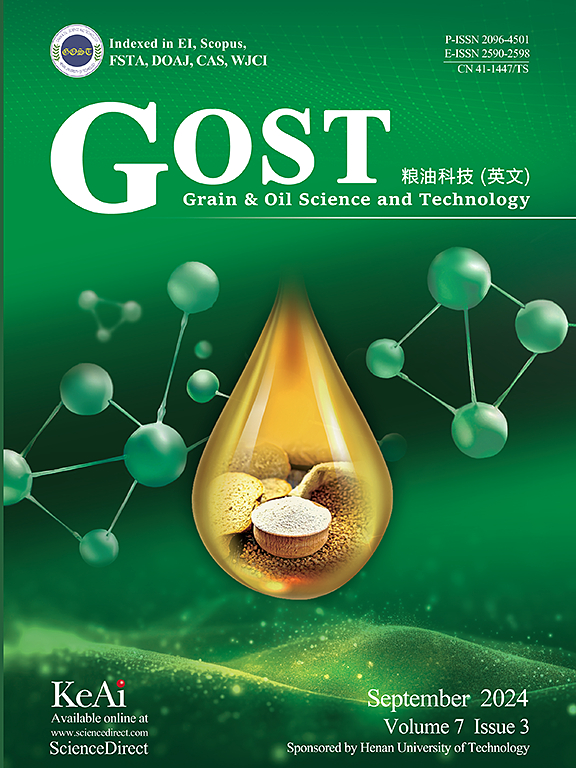Tribological behavior of soybean milk with different soaking temperatures: From the structural aspect
Q2 Agricultural and Biological Sciences
引用次数: 0
Abstract
To understand the effect of the process on the lubrication properties of soybean milk, the physicochemical characteristics of soybean milk with different soaking temperatures were analyzed. Results showed that soaking temperatures of 20 °C and 40 °C had the most positive impact on the mouthfeel of soybean milk, with the latter (40 °C) yielding the lowest friction coefficient. Higher soaking temperatures (60 °C and 80 °C) led to larger particles, higher friction coefficients, and lower consumer acceptance. The differences in soaking temperatures caused varying degrees of protein expansion or denaturation, which interacted with polysaccharides and lipids to form substances with different particle sizes. The larger particles tended to roll on the friction pair, while the smaller particles tended to slide on the friction pair or form a droplet film, resulting in a smaller coefficient of friction. This study contributes to the understanding of the tribological behavior of particles and provided basic data for the correlation of friction coefficient and sensory.

不同浸泡温度下豆浆的摩擦学行为:从结构角度
为了解工艺对豆浆润滑性能的影响,分析了不同浸泡温度下豆浆的理化特性。结果表明,浸泡温度为20℃和40℃对豆浆口感的影响最大,其中浸泡温度为40℃时豆浆的摩擦系数最低。较高的浸泡温度(60°C和80°C)导致颗粒更大,摩擦系数更高,消费者接受度更低。不同的浸泡温度使蛋白质发生不同程度的膨胀或变性,并与多糖和脂质相互作用,形成不同粒径的物质。较大的颗粒倾向于在摩擦副上滚动,而较小的颗粒倾向于在摩擦副上滑动或形成液滴膜,导致摩擦系数较小。该研究有助于了解颗粒的摩擦学行为,并为摩擦系数与感官的相关性提供了基础数据。
本文章由计算机程序翻译,如有差异,请以英文原文为准。
求助全文
约1分钟内获得全文
求助全文
来源期刊

Grain Oil Science and Technology
Food Science
CiteScore
7.30
自引率
0.00%
发文量
69
审稿时长
12 weeks
期刊介绍:
 求助内容:
求助内容: 应助结果提醒方式:
应助结果提醒方式:


